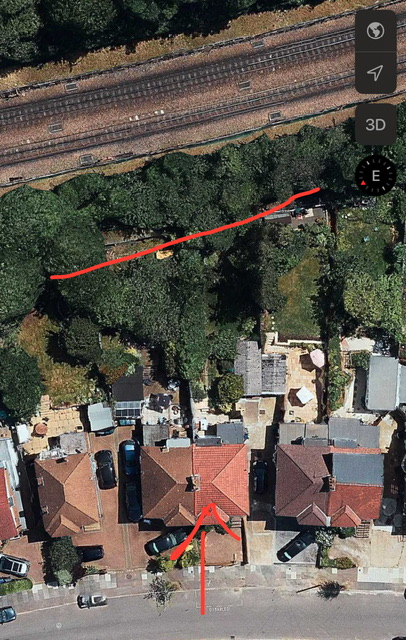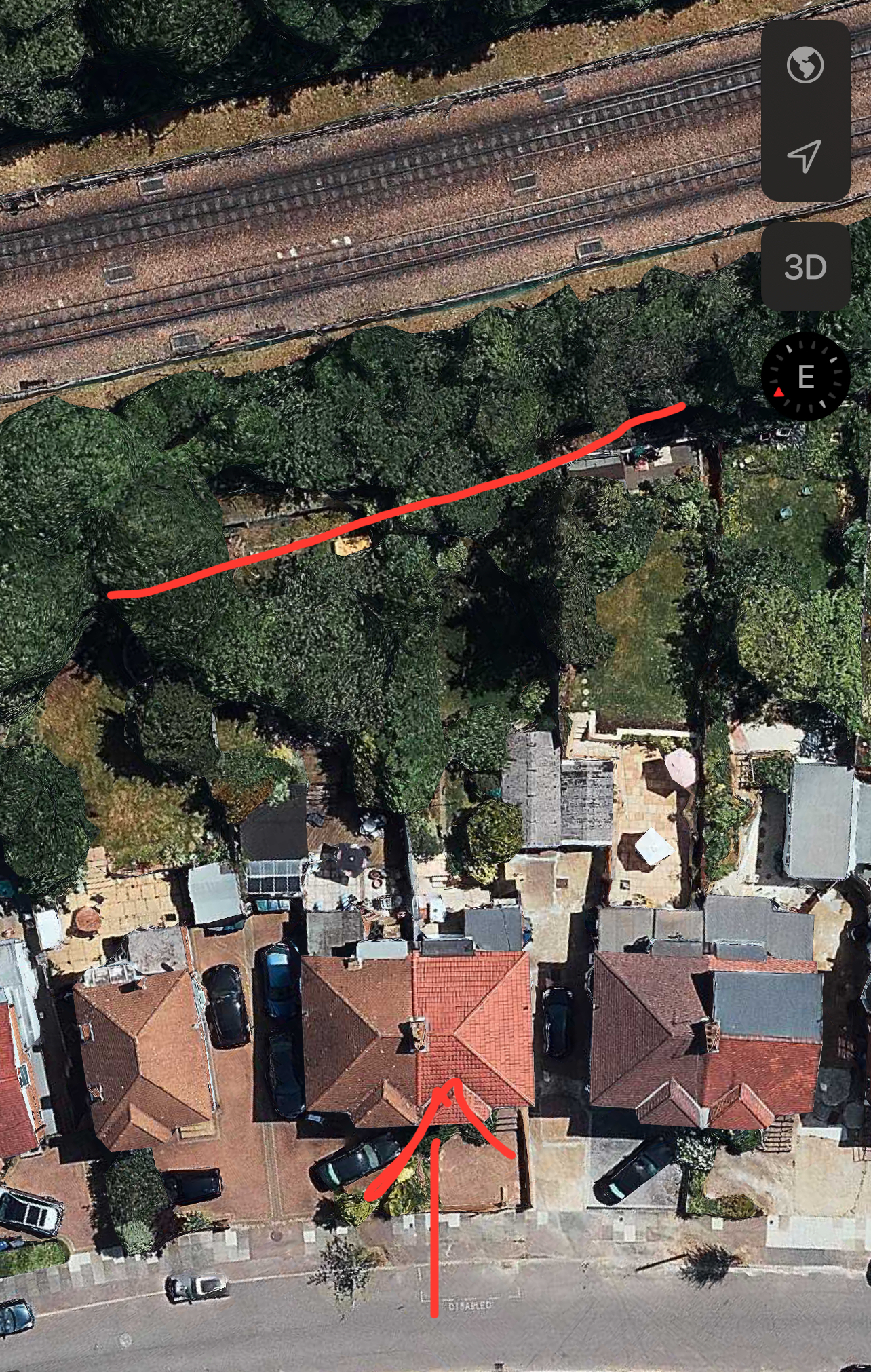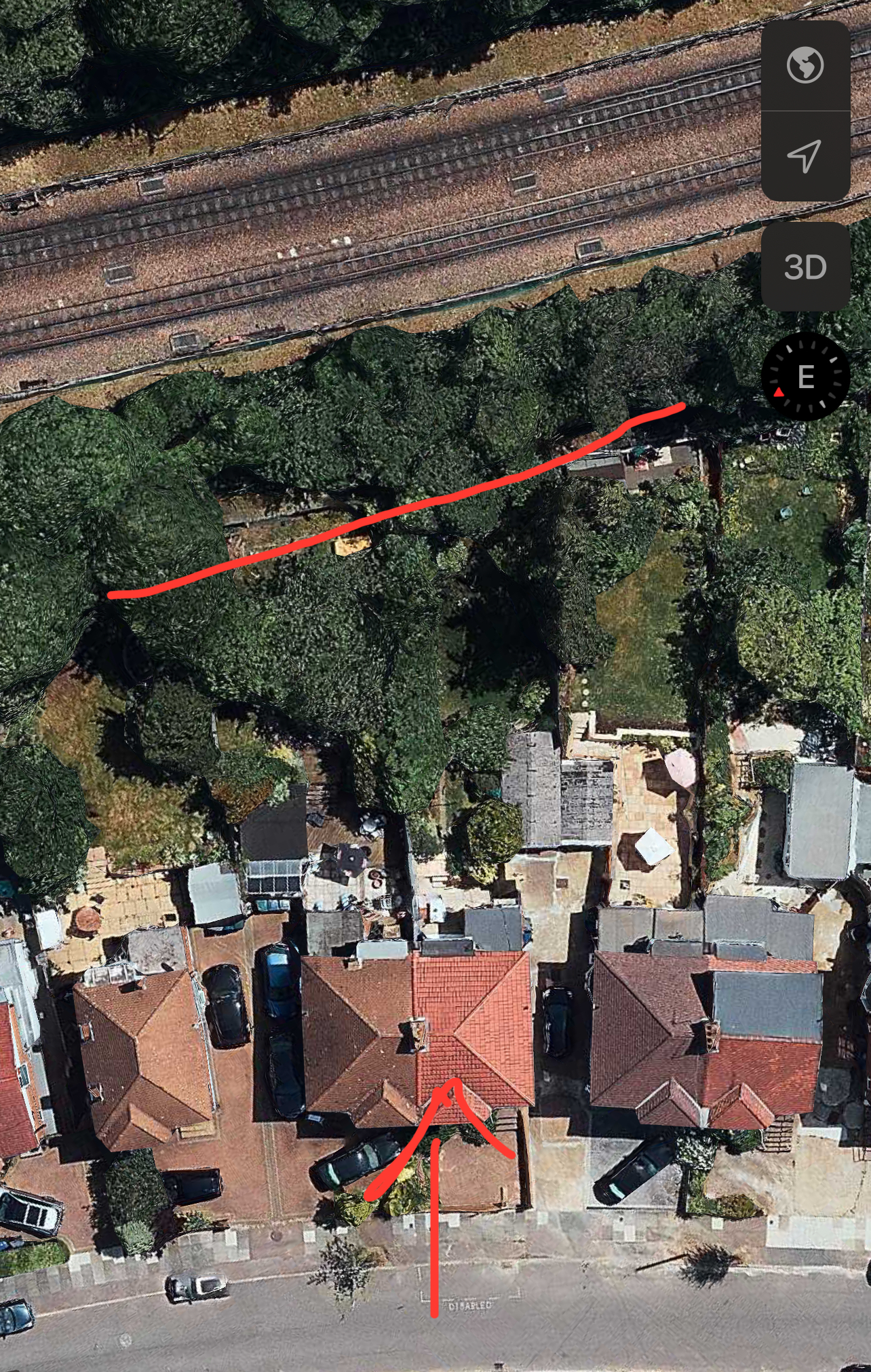We’d like to remind Forumites to please avoid political debate on the Forum.
This is to keep it a safe and useful space for MoneySaving discussions. Threads that are – or become – political in nature may be removed in line with the Forum’s rules. Thank you for your understanding.
PLEASE READ BEFORE POSTING: Hello Forumites! In order to help keep the Forum a useful, safe and friendly place for our users, discussions around non-MoneySaving matters are not permitted per the Forum rules. While we understand that mentioning house prices may sometimes be relevant to a user's specific MoneySaving situation, we ask that you please avoid veering into broad, general debates about the market, the economy and politics, as these can unfortunately lead to abusive or hateful behaviour. Threads that are found to have derailed into wider discussions may be removed. Users who repeatedly disregard this may have their Forum account banned. Please also avoid posting personally identifiable information, including links to your own online property listing which may reveal your address. Thank you for your understanding.
📨 Have you signed up to the Forum's new Email Digest yet? Get a selection of trending threads sent straight to your inbox daily, weekly or monthly!
Buying a property close to rail lines - anything to watch out for/clarify?
Comments
-
How far is the line in your case? Ours would be 35-40 feet from the garden boundary and 110 feet from the house. Attached a photo.Albermarle said:I have a commuter ( and occasionally freight) line at the end of the garden. I do not remember it being mentioned in any of the paperwork when buying the house ( although it was a long time ago) or any restrictions/covenants.
I think though Network Rail have some statutory powers in case you have a massive tree causing problems, or something like that.
Noise wise, it still can be an issue if you are in the garden, but a minor one. 0
0 -
youth_leader said:When my husband died I had to sell my listed grade II railway station, on the live East Coast Main Line. We lived there for twenty odd years and you get used to the trains very quickly, and miss them when they stop running in snow etc.
We were fully fenced, but only had the platform width of about five foot and the earth grass covered bank between us and the railway tracks.
I'm not sure how near your property is to the line, but the new station owner has been telling people he has been quoted £30K to stop the trains for a period so that scaffolding can be put up lineside and roofing works commenced lineside. Sounds like your place was a lot closer than ours?0
Sounds like your place was a lot closer than ours?0 -
user1977 said:I can't see the railway being relevant to the covenants. If you're not even neighbouring the line, Network Rail (if they even have title to enforce the covenants) aren't going to care what you do.
 Sorry should’ve posted this earlier. Gives a sense of distance. Garden fence is around 35-40 feet away from the rail lines0
Sorry should’ve posted this earlier. Gives a sense of distance. Garden fence is around 35-40 feet away from the rail lines0 -
Ah right, you are neighbouring the line then. Still, they're only going to be bothered about you doing something which affects their land in some way, they're not going to complain about you painting your front door the wrong colour.maxxpayne said:user1977 said:I can't see the railway being relevant to the covenants. If you're not even neighbouring the line, Network Rail (if they even have title to enforce the covenants) aren't going to care what you do.Sorry should’ve posted this earlier. Gives a sense of distance. Garden fence is around 35-40 feet away from the rail lines0 -
maxxpayne said:user1977 said:I can't see the railway being relevant to the covenants. If you're not even neighbouring the line, Network Rail (if they even have title to enforce the covenants) aren't going to care what you do.Sorry should’ve posted this earlier. Gives a sense of distance. Garden fence is around 35-40 feet away from the rail linesI think I know the road - if so, the probable issue isn't so much the distance from the house to the tracks, but more likely the fact the line is at a higher level than the street so you'll be relying on the trees (on TfL land) to act as a sound barrier. Rail operators from time to time decide they need to adopt a scorched earth approach where trees are considered too close to the railway (leaves on the line) and there's not much the nearby residents can do about it.Being a tube line it isn't used for freight, which is one of the more disturbing types of train, so you will probably get used to the noise quite quickly.When lines like this were being extened in the 1930's the LPTB purchased not just the land they needed for the line, but also whole farms/estates which they then developed or sold on to developers. The covenants look very much like the type that go with this kind of land - LPTB had very firm ideas of the kind of people they wanted living in the area, with a view in particular to them using their transport services. It is unlikely they will do much enforcement, but it couldn't be ruled out if they took issue with a structure (or similar) you built in the garden that risked falling or being blown onto the railway operational land.If it hasn't gone already (and assuming you don't need it) you might want to find out from the council whether they would be willing to get rid of the disabled parking bay, and worth checking their criteria for a dropped kerb as the front garden looks borderline for being able to get an off-street parking area, other than the existing (presumably) shared drive.1
-
I think I know the road - if so, the probable issue isn't so much the distance from the house to the tracks, but more likely the fact the line is at a higher level than the street so you'll be relying on the trees (on TfL land) to act as a sound barrier. Rail operators from time to time decide they need to adopt a scorched earth approach where trees are considered too close to the railway (leaves on the line) and there's not much the nearby residents can do about.Very impressed with your map sleuthing skills!So the house is next to the arrow so thankfully kerb is dropped.LPTB had very firm ideas of the kind of people they wanted living in the area, with a view in particular to them using their transport services.Dare I ask what kind of people? Just historical curiosity.but it couldn't be ruled out if they took issue with a structure (or similar) you built in the garden that risked falling or being blown onto the railway operational land.Really it could be a tree house or one of those prefabricated offices?0
-
maxxpayne said:I think I know the road - if so, the probable issue isn't so much the distance from the house to the tracks, but more likely the fact the line is at a higher level than the street so you'll be relying on the trees (on TfL land) to act as a sound barrier. Rail operators from time to time decide they need to adopt a scorched earth approach where trees are considered too close to the railway (leaves on the line) and there's not much the nearby residents can do about.Very impressed with your map sleuthing skills!So the house is next to the arrow so thankfully kerb is dropped.The kerb is dropped for the original shared access, but some councils don't like people using the shared access dropped kerb for parking in the front garden where the entry/exit manouvre (and parking) has to be at 45 degrees to the footway. The way the neighbours are parking at 45 degrees isn't allowed in some cases, depending on the council involved.As this is London, the council has lawful powers to carry out work to physically stop vehicles being driven on and off a driveway - which at a legal stretch could be used to stop this 45 degree parking. If they wanted to.It also looks like there is a level difference between the front garden and the footway, so even if the dropped kerb isn't an issue you may have problems constructing an area you can park on which complies with the council's requirements.It may not be a problem for you, but it would be sensible to check out the council's policy to make sure you'd be able to park - especially if you have (or plan to get) an electric vehicle. The alternative would be checking whether the garage(?) area at the rear would give you a large enough space to park and charge an EV.
Professionals.... the type who would be likely to make use of the tube service to get to work (or meet clients) in Central London. This is one of the reasons why the covenants exclude certain professions from the 'no business from home' rules. As well as the bus services (also run by LPTB), several stations in the area were provided with generous (for the time) sized car parks so those with a car could commute by tube more conveniently.maxxpayne said:LPTB had very firm ideas of the kind of people they wanted living in the area, with a view in particular to them using their transport services.Dare I ask what kind of people? Just historical curiosity.
Those are the kind of things potentially that London Underground could take issue with. I'm not saying they will, and in your case being lower than the railway probably makes problems less likely, but if someone put up a flimsy shed near the top of an embankment which looked like one gust of wind would blow it down onto the tracks then the covenants might come into play.maxxpayne said:but it couldn't be ruled out if they took issue with a structure (or similar) you built in the garden that risked falling or being blown onto the railway operational land.Really it could be a tree house or one of those prefabricated offices?
0 -
The only 'anything else' to mention is possible night-time goods trains, I lived for a few years close to a railway line and wasnt bothered by noise (the motorway class road alongside was much more bothersome) except sometimes between 2 and 4 am a very heavy goods train would go through which would wake me up and literally shake the house.
1 -
I understand it now. Looking at street view every house seems to have done the 45 degree parking so Barnet council probably is lenient on this. Plus we’ll probably have two cars max to care about so not worrying too much.Section62 said:maxxpayne said:I think I know the road - if so, the probable issue isn't so much the distance from the house to the tracks, but more likely the fact the line is at a higher level than the street so you'll be relying on the trees (on TfL land) to act as a sound barrier. Rail operators from time to time decide they need to adopt a scorched earth approach where trees are considered too close to the railway (leaves on the line) and there's not much the nearby residents can do about.Very impressed with your map sleuthing skills!So the house is next to the arrow so thankfully kerb is dropped.The kerb is dropped for the original shared access, but some councils don't like people using the shared access dropped kerb for parking in the front garden where the entry/exit manouvre (and parking) has to be at 45 degrees to the footway. The way the neighbours are parking at 45 degrees isn't allowed in some cases, depending on the council involved.As this is London, the council has lawful powers to carry out work to physically stop vehicles being driven on and off a driveway - which at a legal stretch could be used to stop this 45 degree parking. If they wanted to.It also looks like there is a level difference between the front garden and the footway, so even if the dropped kerb isn't an issue you may have problems constructing an area you can park on which complies with the council's requirements.It may not be a problem for you, but it would be sensible to check out the council's policy to make sure you'd be able to park - especially if you have (or plan to get) an electric vehicle. The alternative would be checking whether the garage(?) area at the rear would give you a large enough space to park and charge an EV.
Professionals.... the type who would be likely to make use of the tube service to get to work (or meet clients) in Central London. This is one of the reasons why the covenants exclude certain professions from the 'no business from home' rules. As well as the bus services (also run by LPTB), several stations in the area were provided with generous (for the time) sized car parks so those with a car could commute by tube more conveniently.maxxpayne said:LPTB had very firm ideas of the kind of people they wanted living in the area, with a view in particular to them using their transport services.Dare I ask what kind of people? Just historical curiosity.
Those are the kind of things potentially that London Underground could take issue with. I'm not saying they will, and in your case being lower than the railway probably makes problems less likely, but if someone put up a flimsy shed near the top of an embankment which looked like one gust of wind would blow it down onto the tracks then the covenants might come into play.maxxpayne said:but it couldn't be ruled out if they took issue with a structure (or similar) you built in the garden that risked falling or being blown onto the railway operational land.Really it could be a tree house or one of those prefabricated offices?Interesting tidbit on the professional angle. Everyday is a school day. Thanks for this.0 -
It’s a tube line (Piccadilly to be precise) so hopefully it won’t be a challenge. What I plan to do is stake out on the street in the morning and night unless I find an AirBnB on the street to get a hang of the noise.incus432 said:The only 'anything else' to mention is possible night-time goods trains, I lived for a few years close to a railway line and wasnt bothered by noise (the motorway class road alongside was much more bothersome) except sometimes between 2 and 4 am a very heavy goods train would go through which would wake me up and literally shake the house.I suspect asking the seller or the agent will only get me a generic “not an issue” type answer.0
Confirm your email address to Create Threads and Reply

Categories
- All Categories
- 351.9K Banking & Borrowing
- 253.5K Reduce Debt & Boost Income
- 454.1K Spending & Discounts
- 244.9K Work, Benefits & Business
- 600.4K Mortgages, Homes & Bills
- 177.4K Life & Family
- 258.6K Travel & Transport
- 1.5M Hobbies & Leisure
- 16.2K Discuss & Feedback
- 37.6K Read-Only Boards




